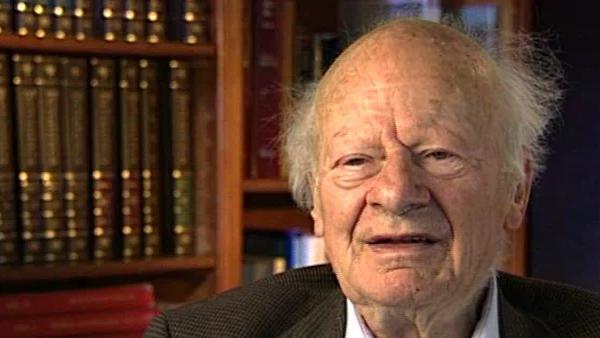NEXT STORY

Invitation from Oppenheimer to join the Manhattan Project
RELATED STORIES

NEXT STORY

Invitation from Oppenheimer to join the Manhattan Project
RELATED STORIES


|
Views | Duration | |
|---|---|---|---|
| 81. Isotope separation to isolate Uranium-235 | 538 | 02:04 | |
| 82. Outbreak of World War II; scientists' efforts | 1 | 538 | 04:07 |
| 83. Offering to work with Edward Teller for the war effort | 650 | 04:40 | |
| 84. The use of my paper on shockwaves with Edward Teller | 493 | 02:43 | |
| 85. Armour penetration | 686 | 01:25 | |
| 86. Joining the MIT radiation laboratory and the Bethe coupler | 542 | 04:10 | |
| 87. Invitation from Oppenheimer to join the Manhattan Project | 724 | 04:18 | |
| 88. Edward Teller's ideas for a fusion bomb | 865 | 02:41 | |
| 89. Why Oppenheimer was the ideal leader of Los Alamos | 1260 | 02:08 | |
| 90. Building the laboratory at Los Alamos | 591 | 03:02 |


I knew about the establishment of the Radar Laboratory at MIT and I wondered how to be useful on that. So I gave a course at Cornell University about the propagation of electromagnetic waves in wave guides, which was attended by both physicists and engineers. And I assembled a small group of theoretical physicists, including Julian Schwinger, to work on the theory of propagation in wave guides, and we, I think, produced a few papers which were found useful by the radiation laboratory. Finally, in... just about a day after the Pearl Harbor attack, I got my clearance and was able to come to the Radiation Lab in person and finally to join it in, I guess, May or June of '42.
[Q] And so - who... the beginnings of '42 you're involved in radar work. You actually publish even during the war some work on diffraction through small apertures and things like that, related to this work.
Yes, and there was a colleague at the radiation lab, who said 'Well, but you have done about diffraction through small apertures really was already done by Lord Rayleigh.' Of course I didn't know about that. But I did one useful piece of work, maybe two. One was to explain the action of a semiconductor which after the war led Bardeen and others to invent the Transistor. And the other, which I pursued much further was the problem of two wave guides coupled to each other the... through a small aperture, and it was possible just by theory to tell what would happen in the second wave guide - namely if in the first wave guide there was a wave running east, then in the second wave guide there would be a much weaker wave running west. And this device is known as the Bethe Coupler, and was then mentioned to my kid brother who is 28 years younger than I, studied electrical engineering and one day he was told about the Bethe coupler. And it is used to find out just how the waves run in a wave guide.
The late German-American physicist Hans Bethe once described himself as the H-bomb's midwife. He left Nazi Germany in 1933, after which he helped develop the first atomic bomb, won the Nobel Prize in Physics in 1967 for his contribution to the theory of nuclear reactions, advocated tighter controls over nuclear weapons and campaigned vigorously for the peaceful use of nuclear energy.
Title: Joining the MIT radiation laboratory and the Bethe coupler
Listeners: Sam Schweber
Silvan Sam Schweber is the Koret Professor of the History of Ideas and Professor of Physics at Brandeis University, and a Faculty Associate in the Department of the History of Science at Harvard University. He is the author of a history of the development of quantum electro mechanics, "QED and the men who made it", and has recently completed a biography of Hans Bethe and the history of nuclear weapons development, "In the Shadow of the Bomb: Oppenheimer, Bethe, and the Moral Responsibility of the Scientist" (Princeton University Press, 2000).
Tags: MIT, Radiation Lab, Cornell University, Pearl Harbor, 1942, Julian Schwinger, John Strutt, 3rd Baron Rayleigh, John Bardeen
Duration: 4 minutes, 11 seconds
Date story recorded: December 1996
Date story went live: 24 January 2008